It’s common to hear people talk about productivity, as if it were an art, a skill to be mastered. But how to define productivity?
For some, it’s the ability to multitask in a short amount of time. For others, it’s the ability to focus on a single task and do it with excellence.
I like to think that productivity is a mixture of these two concepts, and that’s what I’m going to write and reflect on today in this short article.
The art of productivity
When people ask me how I organize my routine to be productive, I always start by talking about the importance of setting clear goals.
After all, without well-defined goals, it’s easy to get lost in the midst of so many everyday tasks, and productivity ends up disappearing. Therefore, whether for a long-term project or for day-to-day activities, it is essential to know where we want to go.
One technique I adopted to help me at this stage was the SMART method, which consists of defining specific, measurable, achievable, relevant and time-bound goals. This way, I can have a sense of purpose and direction, making it easier to organize my routine.
Another essential aspect of a productive routine is discipline. For me, discipline does not mean rigidity or inflexibility, but the ability to establish and stick to a plan, even when distractions and discouragement arise.
Discipline: the muscle that gets stronger
I believe that discipline is like a muscle that gets stronger with practice, and little by little it makes us more resistant to the temptations that keep us away from our goals. To exercise this discipline, I follow a morning ritual that helps me start my day on the right foot.
Waking up early, practicing physical exercises, meditating and having a healthy breakfast are practices that I have adopted and that provide me with energy and focus to face the challenges of everyday life.
Another strategy that I implemented in my routine was the use of to-do lists. However, I don’t use a single list, but several, divided by categories such as work, personal life and side projects.
In addition, I also try to assign priorities to these tasks, so that I know in what order I should do them. This is essential so that you don’t stop at one thing and start another.
Using the Pomodoro Technique
One technique that has proven very effective for me is the Pomodoro Technique, which consists of breaking your work time into 25-minute blocks, called pomodoros, followed by a five-minute break.
Every four Pomodoros, I take a longer break, about 15-30 minutes. This method allows me to maintain focus and energy throughout the day, avoiding mental and physical exhaustion.
I also believe it’s important to cultivate an environment conducive to productivity. To do this, I keep my desk organized and free of distractions, such as my cell phone or unnecessary items.
In this way, I seek to create a space that is comfortable and inspiring, with good lighting and ventilation, and even some plants to bring a touch of life to the environment.
Balance between professional and personal life
Productivity is also related to work-life balance. Therefore, it is essential to set aside time to take care of yourself, be with family and friends and dedicate yourself to hobbies and pleasurable activities.
To ensure this balance, I try to establish clear boundaries between my work and leisure time, avoiding taking work home or thinking about problems at the office during moments of rest.
Remember that productivity is not an exact science, and that each person has their own characteristics. Therefore, it is essential to be open to experimenting with different strategies and techniques, adapting them to your reality and your goals.
Ability to learn from mistakes
Finally, I believe that the art of productivity is directly linked to resilience and the ability to learn from mistakes.
We won’t always be able to accomplish all the tasks we plan, and it’s normal to feel discouraged or unmotivated from time to time. The important thing is not to let yourself down, but to seek to understand what went wrong and what can be improved.
In short, productivity is a skill that can be developed and improved over time, and routine organization is one of the fundamental pillars to achieve it.
Thus, it is possible to transform the art of productivity into a concrete reality and achieve our goals with more efficiency and satisfaction. Do you agree?
